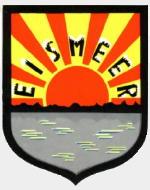Corgi AA27110 German Messerschmitt Bf 109G-6 "Gustav" Fighter - Black Double Chevron 'Mickey Mouse', Hptm. Horst Carganico, CO II./Jagdgeschwader 5 "Eismeer", Pskow South Airfield, Soviet Union, Early 1944 (1:72 Scale)
"An unrivaled virtuoso among the fighter pilots of World War II. His achievements had previously been regarded as impossible and they were never excelled by anyone after his death."
- General Adolf Galland discussing the life and death of Hans Joachim Marseille
 Numerically the most abundant fighter produced by either side during WWII, the Messerschmitt Bf 109 formed the backbone of the Jagdwaffe on both the eastern and western fronts, as well as in the Mediterranean and North Africa. Of the eight distinct sub-types within the huge Bf 109 family, the most populous was the G-model, of which over 30,000 were built between 1941-45. Despite its production run, only a handful of genuine German Bf 109s have survived into the 1990s, and with the serious damaging of the RAFs G-2 at Duxford in October 1997, only the German-based MBB G-6 and Hans Ditte's G-10 (both composites) are currently airworthy.
Numerically the most abundant fighter produced by either side during WWII, the Messerschmitt Bf 109 formed the backbone of the Jagdwaffe on both the eastern and western fronts, as well as in the Mediterranean and North Africa. Of the eight distinct sub-types within the huge Bf 109 family, the most populous was the G-model, of which over 30,000 were built between 1941-45. Despite its production run, only a handful of genuine German Bf 109s have survived into the 1990s, and with the serious damaging of the RAFs G-2 at Duxford in October 1997, only the German-based MBB G-6 and Hans Ditte's G-10 (both composites) are currently airworthy.
The Bf 109 G-series was developed from the largely identical F-series airframe, although there were detail differences. Modifications included a reinforced wing structure, an internal bullet-proof windscreen, the use of heavier, welded framing for the cockpit transparencies, and additional light-alloy armor for the fuel tank. It was originally intended that the wheel wells would incorporate small doors to cover the outer portion of the wheels when retracted. To incorporate these the outer wheel bays were squared off. Two small inlet scoops for additional cooling of the spark plugs were added on both sides of the forward engine cowlings. A less obvious difference was the omission of the boundary layer bypass outlets, which had been a feature of the F-series, on the upper radiator flaps.
Like most German aircraft produced in World War II, the Bf 109 G-series was designed to adapt to different operational tasks with greater versatility; larger modifications to fulfill a specific mission task, such as long-range reconnaissance or long-range fighter-bomber, were with "Ruststand" and given a "/R" suffix, smaller modifications on the production line or during overhaul, such as equipment changes, were made with kits of pre-packaged parts known as Umrust-Bausatze, usually contracted to Umbau and given a "/U" suffix. Field kits known as Rustsatze were also available but those did not change the aircraft designation. Special high-altitude interceptors with GM-1 nitrous oxide injection high-altitude boost and pressurized cockpits were also produced.
Pictured here is a 1:72 scale replica of a German Messerschmitt Bf 109G-6 "Gustav" fighter that was piloted by Hptm. Horst Carganico, who was the commanding officer of II./Jagdgeschwader 5 "Eismeer", then deployed to Pskow South Airfield, Soviet Union, during early 1944.
Now in stock!
Dimensions:
Wingspan: 5-1/2-inches
Length: 5-inches
Release Date: December 2021
 Historical Account: "Mickey Mouse" - Born in Silesia in October 1917, Horst Carganico was already a pilot with Jagdgeschwader 1 at the outbreak of WWII and would see his first combat action against the RAF whilst flying from Luftwaffe bases in Norway. Despite this, it would be on the Eastern Front where Carganico would have his greatest success as a fighter pilot, taking an active part in Operation Barbarossa and claiming at least 20 aerial victories by the end of September 1941. In the six weeks from the beginning of April 1942, he would go on a scoring run which would see him claiming a further 23 victories, but as Soviet fighter effectiveness began to improve steadily during the year, he would not have everything his own way. On two separate occasions, he would be brought down over Soviet territory following combat with the VVS (Soviet Air Force), luckily managing to evade capture and return to his unit both times.
Historical Account: "Mickey Mouse" - Born in Silesia in October 1917, Horst Carganico was already a pilot with Jagdgeschwader 1 at the outbreak of WWII and would see his first combat action against the RAF whilst flying from Luftwaffe bases in Norway. Despite this, it would be on the Eastern Front where Carganico would have his greatest success as a fighter pilot, taking an active part in Operation Barbarossa and claiming at least 20 aerial victories by the end of September 1941. In the six weeks from the beginning of April 1942, he would go on a scoring run which would see him claiming a further 23 victories, but as Soviet fighter effectiveness began to improve steadily during the year, he would not have everything his own way. On two separate occasions, he would be brought down over Soviet territory following combat with the VVS (Soviet Air Force), luckily managing to evade capture and return to his unit both times.
Carganico was known for adding his personal "Mickey Mouse' emblem to the majority of the Messerschmitt fighters he flew, including the rather elaborate example which adorned this II./Jagdgeschwader.5 machine, which surely made this one of the most distinctive fighters on the Eastern Front. He would survive the savage fighting in the East only to be killed in May 1944 whilst engaged in combat with USAAF fighters over Saint-Dizier - attempting a forced landing in his damaged aircraft, the fighter struck high tension cables and crashed. Carganico posted an impressive combat record of 60 confirmed victories from a total mission count of around 600 sorties, mainly on the Eastern Front.


